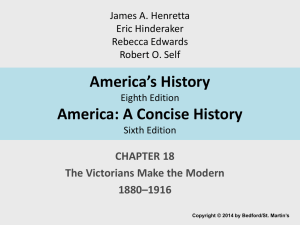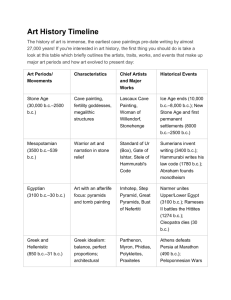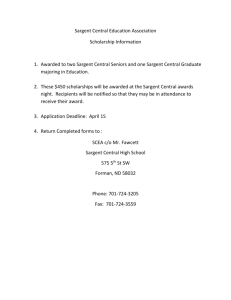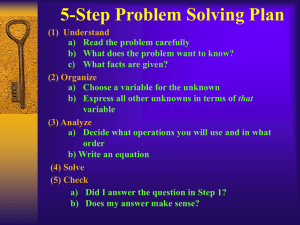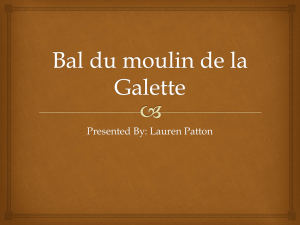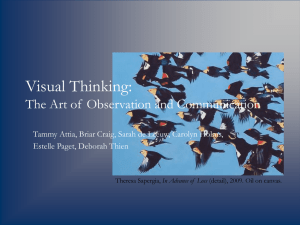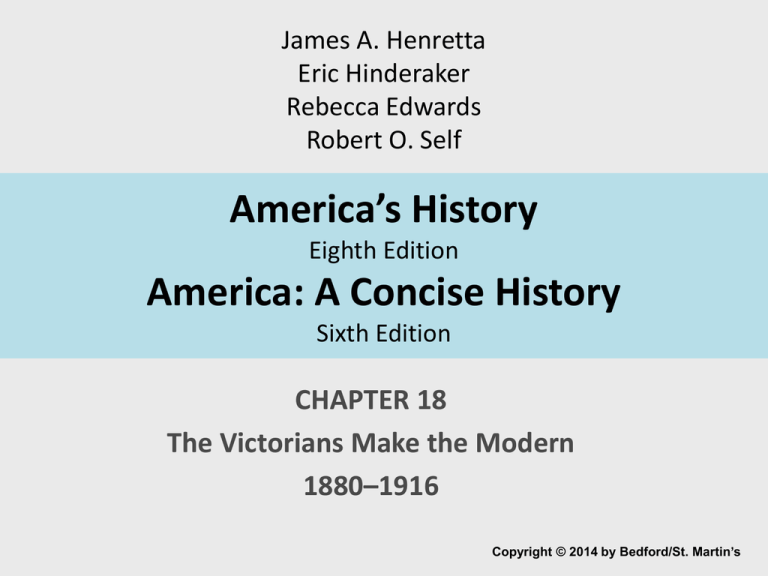
James A. Henretta
Eric Hinderaker
Rebecca Edwards
Robert O. Self
America’s History
Eighth Edition
America: A Concise History
Sixth Edition
CHAPTER 18
The Victorians Make the Modern
1880–1916
Copyright © 2014 by Bedford/St. Martin’s
I. Commerce and Culture
A. Consumer Spaces (Long male-centered, new businesses changed their atmospheres
in order to attract women.)
1. The circus – P. T. Barnum used rail system for traveling circus; focused on family
entertainment; emphasized refined female entertainers to encourage women’s
attendance; promised middle-class parents that circus would teach children
courage and promote outdoor activity and exercise.
2. First-class rail cars – Railroad companies sought to make their customers comfortable
with modern amenities; fitted with carpets, upholstery, and woodwork; first-class
“ladies’ cars” were opulent and soon became sites of struggle for racial equality;
prohibited African Americans from sharing the space.
3. Plessy v. Ferguson (1896) – Supreme Court decision declared that “separate but
equal” facilities for African Americans on railroad cars and in other public facilities
did not violate the Fourteenth Amendment; placing a stamp of approval on
segregation, the Plessy decision allowed Jim Crow laws to stand and expand
dramatically.
I. Commerce and Culture
D. Masculinity and the Rise of Sports
1. “Muscular Christianity” – Introduced in Boston (1851), YMCA was first promoter of
physical fitness in the U.S.; adapted from a British model and advocated vigorous
exercise for young men; combined evangelism with gyms and athletic facilities where
men could make themselves “clean and strong”; 1900–1917 developed an industrial
program to foster loyalty to companies and a content workforce; serving on company
teams instilled pride and teamwork; searching for winter activities in the 1890s, YMCA
instructors invented basketball and volleyball; some negotiations arose on whether the
working class could be participants.
2. America’s Game – Baseball developed before the Civil War, spread in popularity during
the war, and became a professional sport after the war; National League was launched in
1876; first World Series was held in 1903; employers encouraged company teams.
3. Rise of the Negro Leagues – At the turn of the century, most black players were barred
from professional teams; led to development of segregated teams; desegregation came
after World War II.
4. American Football – Controversial sport grew out of Ivy League colleges in 1880s; the
game was violent—6 player deaths in 1908; eventually, rules were put in place to protect
players; professional teams developed in Pittsburgh, Green Bay (WI), and Chicago.
I. Commerce and Culture
C. The Great Outdoors (1890: 10 million bicycles sold in U.S. as Americans began
to reject Victorian culture as stuffy and claustrophobic; revolted by heading
outdoors.)
1. Preservation – National and state governments made provisions for land to be set
aside for preservation and recreation; extended the reach of national forests;
Wilson created the National Parks Service (1916); Lacey Act (1900) established
federal penalties for selling specified birds, animals, and plants. Antiquities Act
(1906) allowed the president to set aside “objects of historic and scientific interest”
as national monuments; debate ensued over the use of natural resources (ex:
timber) from monuments vs. parks, which were protected.
2. Environmentalists – John Muir, an inventor from Wisconsin, founded the Sierra Club
(1892) for exploring and preserving Pacific Coast; protection of wildlife encouraged;
Audubon societies called for protection of bird species; new laws against hunting
game caused controversy.
II. Women, Men, and the
Solitude of the Self
A. Changes in Family Life
1. The average American family – Family size decreased in post-Civil
War years; in 1800, women gave birth to an average of 7 children; in
1900, the average was 3.6; farming families needed many children for
work; families in industrial society limited family size and concentrated
their resources on helping the children succeed in the market economy;
couples married at older ages; tried to suppress fertility by nursing,
condoms, and diaphragms (vulcanization of rubber made these
possible).
2. Comstock Act – In 1873, Anthony Comstock secured a federal law
banning “obscene materials” from U.S. mail; was applied to any
information about sex and birth control; supported by those who feared
the rising tide of pornography, sexual information, and contraceptives
made available by industrialization.
•
•
•
1. Describe Sargent’s depiction of this newly married
couple. (Answer: Formal dress: man in suit jacket, vest,
tie; woman in long skirt, jacket, long shirt-sleeves, with a
hat at her hip; man appears serious, standing behind in
her shadow; woman almost smiling with hand at hip.)
2. What can we conclude about this couple from
Sargent’s painting? (Answer: We know little of this
couple except that they have enough wealth to dress in
fine clothing; someone, if not themselves, has the
means to commission a portrait for them; the
placement of the husband behind the wife should be
discussed as this is a period in which husbands were the
representation of the family in public; perhaps here, as
they marry, Sargent allowed her to shine, the husband
standing behind to celebrate her beauty.)
3. Does this portrait give us any clues into married life at
the turn of the century? (Answer: This couple would not
be representative of married couples in the nineteenth
or early twentieth century because of their wealth; we
can tell that they are white and of European descent,
but we know little else about them from Sargent’s
work.)
II. Women, Men, and the
Solitude of the Self
B. Education
1. The rise of high school – Education was critical for affluent boys preparing for professional
employment; daughters were encouraged to attend school to gain employable skills (“just in case”);
technical and business education were important for urban and rural people; by 1900, 71 percent of
Americans between 5 and 18 years of age attended school; curriculum included literature,
composition, history, geography, biology, mathematics, ancient and modern languages, and athletics.
2. College – By 1920, approximately 8 percent of youth were attending public universities; state
schools emphasized technical training while private colleges pioneered liberal arts.
3. African American education – Tuskegee Institute (1881) established by Booker T. Washington; was
a school for industrial education; educated women for nursing and teaching, and men for trades;
Washington was criticized by civil rights leaders for refusing confrontation with whites over race issue,
focusing instead on training wage earners for economic success.
4. Women’s education – In the Northeast and South, women attended single-sex schools or teachertraining colleges; Vassar College (1861) sought to give women an education equal to that of males;
founding of Smith, Wellesley, and other colleges followed; some feared that education would “unsex”
young women; Vassar included a focus on keeping young women healthy and strong to combat public
criticism of education for women; Midwest and West offered public coeducational universities.
II. Women, Men, and the
Solitude of the Self
C. From Domesticity to Women’s Rights (“Maternalist” ideal: justified women’s work in the
public sphere based on women’s special talents as mothers and Christians.)
1. The Woman’s Christian Temperance Union (WCTU) – Founded in 1874, and led by
Frances Willard; advocated prohibition of liquor; put women at the forefront of
public reform; Willard’s motto was “Home Protection”; WCTU began first national
movement against domestic violence; brought together people from urban and rural
areas; founded soup kitchens and free libraries; investigated prisons; advocated for
8-hour workday and an end to child labor; called for woman suffrage; supported the
Prohibition Party; early twentieth century was reborn in such groups as Anti-Saloon
League.
2. Women, Race, and Patriotism – Daughters of the American Revolution (1890)
excluded black women; United Daughters of the Confederacy (1894) was founded
to extol the South’s “Lost Cause”; Ida B. Wells organized one-woman campaign
against lynching (1892) but won little support; National Association of Colored
Women (1896) showed that black women shared with white women the
determination to carry domesticity into the public sphere; Women’s Convention of
the National Baptist Church (1900) was the largest black women’s group.
II. Women, Men, and the
Solitude of the Self
• C. From Domesticity to Women’s Rights (cont.)
• 3. Women’s Rights – Rival suffrage organizations reunited as
the National American Woman Suffrage Association (NAWSA)
in 1890 and won full ballots of women in Colorado (1893), and
Idaho and Utah (1896); by 1913, most women living west of
the Mississippi have the vote; antisuffragists organized
National Association Opposed to Woman Suffrage (1911); by
the 1910s, some women began to call for women’s full
political, economic and social equality; Heterodoxy Club
(1912) organized in NYC for intellectuals, journalists, and labor
organizers who supported women’s rights and liberation
(called themselves feminists).
III. Science and Faith
A. Darwinism and Its Critics
1. Theory – In his 1859 book, On the Origin of Species, Darwin argued that all
creatures struggle to survive, but some are born with mutations that make
them better fit for their environment (theory of “natural selection”); these
characteristics then become dominant in future generations.
2. Social Darwinism – Elaborate theory developed by Herbert Spencer, British
philosopher; humans had advanced through competition and “survival of
the fittest”; William Graham Sumner, sociologist at Yale, claimed the
wealthy were the “fittest”; Sumner’s views were controversial; critics
argued that Spencer and others (French biologist Jean Baptiste Lamarck)
were making excuses for the excesses of industrial society.
3. Eugenics – So-called “science” of human breeding that argued mentally
deficient people should be prevented from reproducing; proposed
sterilization laws; many associated mental deficiencies with so-called
“lower races,” which led to increased discrimination against people of
Asian, African, and Native American descent.
III. Science and Faith
B. Realism in the Arts
1. Naturalism – Suggested that human beings were victims of forces
beyond their control (impulses and desires); examples include
Stephen Crane’s Maggie: A Girl of the Streets (1893); Jack London’s
story, “The Law of Life” (1901); and Mark Twain’s A Connecticut
Yankee in King Arthur’s Court (1889).
2. Modernism – Rejected traditional canons of literary taste; focused on
the subconscious and “primitive” mind; sought to overturn
convention and tradition; included religious skeptics and atheists;
questioned progress; some photographers argued that their “true”
representations made painting obsolete. But painters invented their
own forms of realism; the Armory Show (1913) introduced America
to modern art, including cubism; was met with both controversy and
fascination.
•
•
•
1. Describe this Arthur B. Davies painting
from 1914. Who is depicted, and what are
they doing?
(Answer: Painting depicts women dancing,
without clothing. Their mode of dancing is
not formal. The painting’s style is also not
traditional but modernist.)
2. Imagine that you are a middle-class,
middle-aged person viewing this painting
in the mid-1910s. How would you
respond? (Answer: Many conventional
people probably would have found this
painting shocking because of the nudity,
the “primitive” forms of dancing
presented, and the cubist style.)
III. Science and Faith
C. Religion: Diversity and Innovation
1. Immigrant Faiths – Arrival of large numbers of Catholics and Jews led to questioning of
whether immigrants should adapt their faiths to American Protestantism;
connections to churches decreased because of harshness of industrial society;
immigrant Catholics established parishes based on ethnicities (Irish, Italian, Polish);
native-born American Jews embraced Reform Judaism, abandoning such religious
practices as keeping a kosher kitchen and conducting services in Hebrew; some
Jews founded Orthodox synagogues.
2. Protestant Innovations – In 1916, Protestants still were a majority in the U.S. but faced
increasing political pressure from large numbers of Catholics; Protestants worked to
evangelize those who were uncommitted to religion through “Social Gospel”:
founded YMCAs, revealed faith through their public welfare and social justice
efforts; introduction in U.S. of British organization, the Salvation Army.
3. Fundamentalists – Conservatives who were concerned about the rising secularism of
the country; a series of Bible Conferences at Niagara Falls were held between 1876
and 1897; reaffirmed the literal “truth” of the Bible and the certain damnation of
those not born again in Christ; used revival meetings; Billy Sunday helped bring
evangelism into the modern era and held revivals to reconnect Americans with
Protestant religion (was hugely popular).

